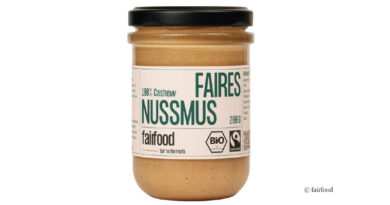Researchers looking for sustainable packaging materials
Sustainable packaging materials that are also marketable – this is what researchers at the Life Sciences Faculty of the Albstadt-Sigmaringen University are looking for.
“In the course of increasing environmental awareness, the demand for ecologically produced food is constantly increasing,” says Professor Markus Schmid at the Albstadt-Sigmaringen University, among other things an expert in food preservation and packaging, noting that the share of regional products, organic food and fair trade goods on supermarket shelves is constantly increasing. “However, sustainability goes well beyond just the food itself,” explains Schmid. “Consumers are also attaching increasing importance to the packaging. The industry is trying to do justice to this trend by reducing the amount of packaging material or using packaging that has improved recyclability. These efforts have also been intensified by the recent entry into force of the new Packaging Act.”
But simply using less or no packaging material is not always an option – especially for sensitive foods such as dairy products, meat or sausages. This is why the search for new and more sustainable packaging materials is in full swing, says Schmid. For example, conventional plastic, which is oil-based and non-biodegradable, is being replaced by so-called biopolymers. These are materials that either use of renewable raw materials and/or are biodegradable.
“However, the use of such substances is not always possible because they have their weaknesses,” Schmid explains, noting that while many biopolymers are in no way inferior to conventional film materials in their mechanical properties, their barrier properties are still partially limited, and this is a problem with some food products. “Optimum protection is mostly not guaranteed so far.”. This is where several current research projects of the Life Sciences Faculty at Albstadt-Sigmaringen come in. The aim is to develop more sustainable packaging materials that both meet the requirements of sensitive food and can be produced at marketable prices.




